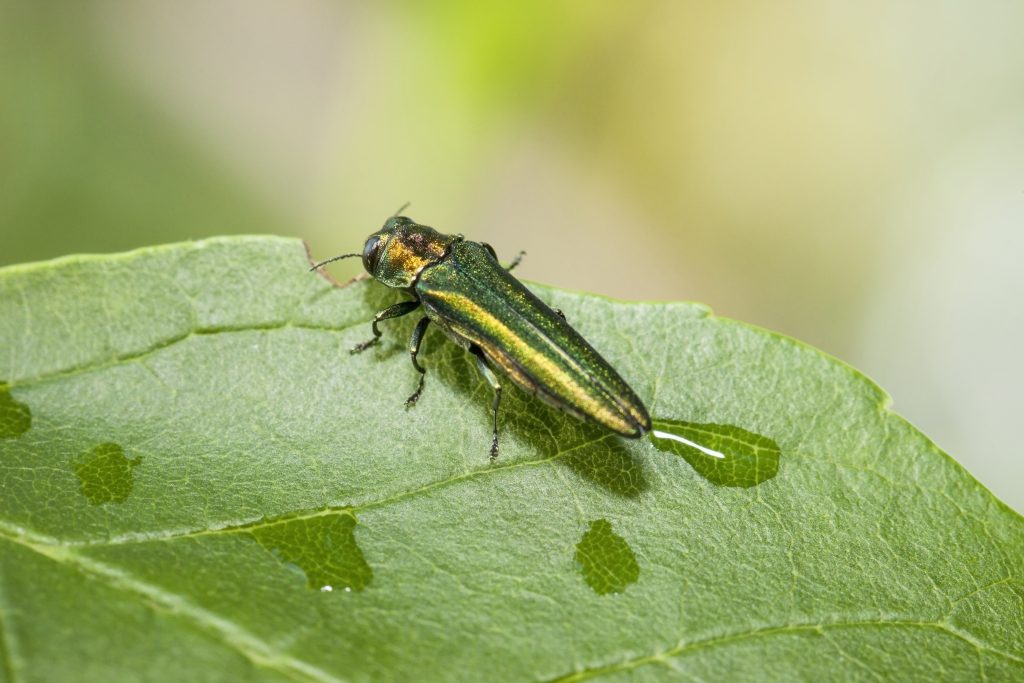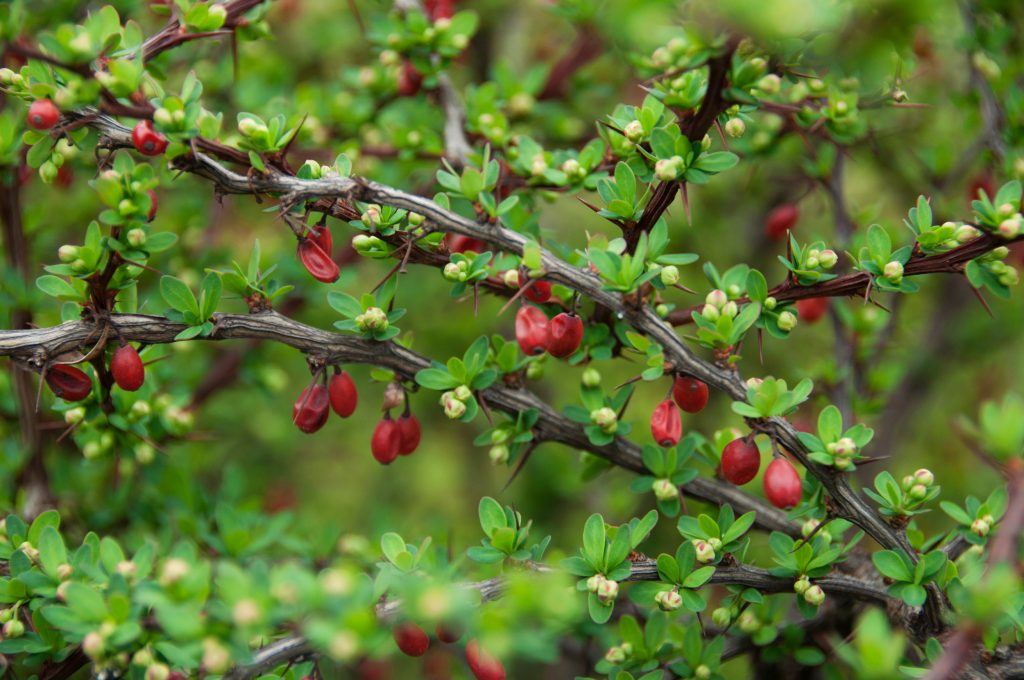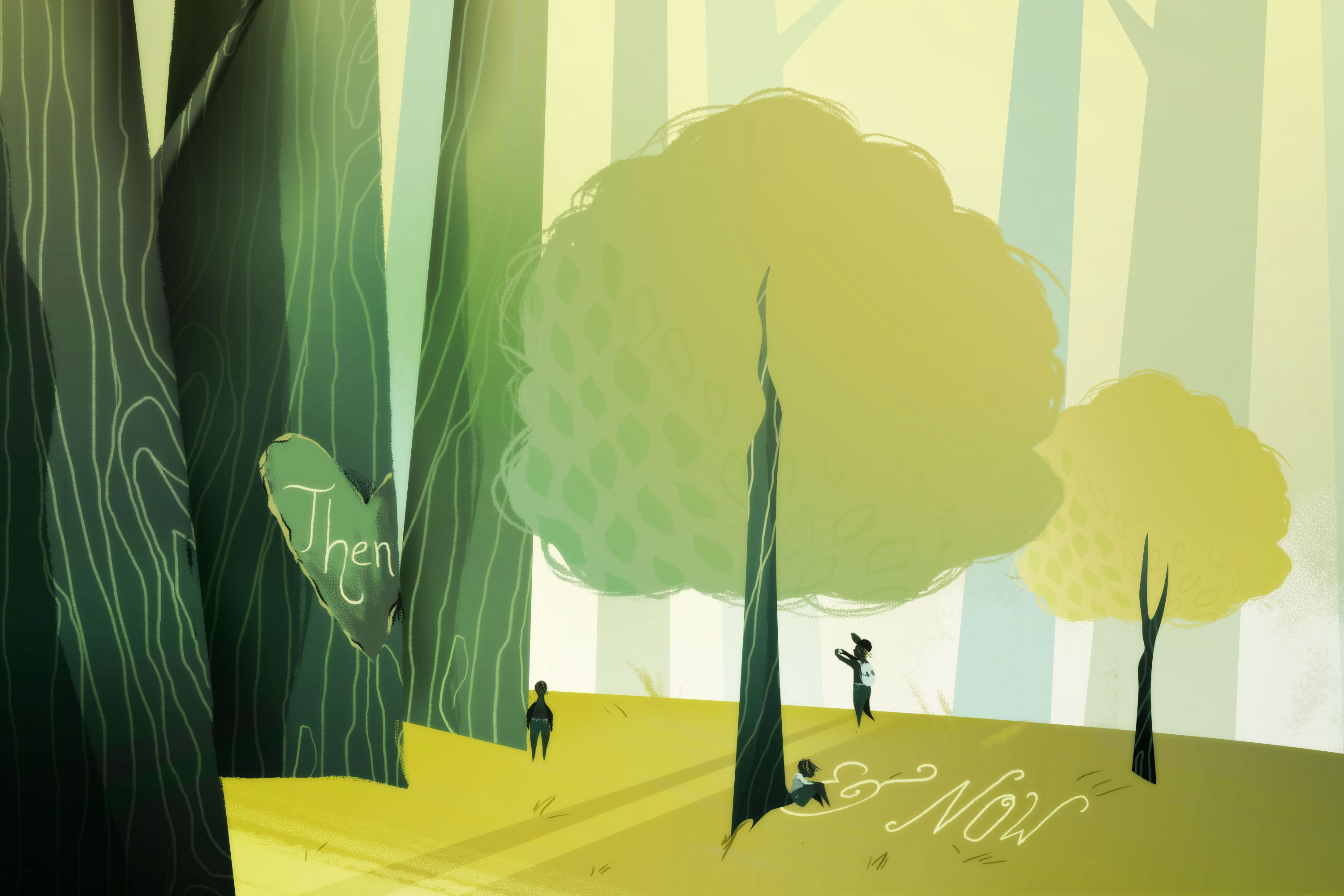This post is part of a series about the research of faculty members who are seeking to understand the impact of climate change here in Connecticut, and to work toward environmentally sustainable solutions.
Imagine stepping back in time, before the first Europeans arrived, into the forests of New England more than 500 years ago.
At that time, these forests were dominated by towering giants, such as the chestnut and white pine, capable of reaching over 100 feet, above a layered variety of species right down to the forest floor. They would have looked very different from what is seen today.
We tend to look at deforestation in areas like the tropics, but we should also look at what is happening in our own backyard. — John Volin
Widespread change initially came to New England after the arrival of the colonists, when forests were cleared to make way for farmlands, says John Volin, a professor of natural resources and the environment and vice provost for academic affairs. Then when richer, less rocky agricultural lands further west appealed to farmers, many New England farms were abandoned and the forest began to regenerate.
That was in the early 1800s. Then industrialization happened, and deforestation took place for a second time in the mid- to late 1800s. It’s hard to picture today’s largely forested landscape as it was 100 years ago, with significantly fewer trees.
The relatively quick regrowth of the forests is testament to the resilience of nature, but the young forests of today are not the same as the forest of 500 years ago.

Typical northeastern forests now consist of dense canopies populated by smaller tree species of similar ages, all currently facing various new threats such as beetles, caterpillars, or blights that have been brought to the area directly or have made their way here due to climate change.
One notable blight, the chestnut blight of the early 1900s, left a devastating legacy, Volin says, completely wiping out the towering chestnut species that once dominated as much as 80 to 90 percent of the canopy in some areas.
Today’s forests are in the midst of further changes. As the tree-top canopy is modified, so is the understory. All of the low-growing trees, shrubs, and vegetative undergrowth are populated differently, depending on the species of trees above them.
Different trees leaf out on slightly different schedules. Some trees are early to leaf, like maples, and others leaf a bit later, like oaks and ash. At the end of the season, some of those early leafing trees will start dropping their leaves earlier, whereas others, like oaks, may keep their leaves well into the fall. All of this timing is important for plants growing beneath these trees, because when leaves are absent, sunlight can reach further toward the forest floor.
The timing of these natural events, called phenology, has big impacts on the structure of the forest. Phenology has been changing as the climate has changed and warmer days have been arriving earlier in the season, Volin says.
Earlier leafing plants begin photosynthesizing and storing away their carbohydrates in what is called a spring subsidy. Volin and his research team have studied this phenomenon and its importance for understory growth, especially with invasive plant species. They found that changes in the composition of the trees in the canopy can have dramatic effects on what species will establish and grow in the understory.
For example, if more maples are present that leaf out earlier in spring, the understory plants will be shaded sooner in the growing season and store less of a carbon subsidy compared to plants growing under later-leafing canopies that are richer in ash or oak.
“Depending on the canopy, some invasive plant species will either be able to get a foothold or not,” says Volin.

Native understory and forest-edge plants are under additional pressures caused by invasive plant species. Some invasive species are able to leaf out much earlier than native plants – in some cases, as much as several weeks earlier – giving them a head start on the spring carbon subsidy. This may give the invasive species a competitive growth advantage over native plants, he says. In addition, many native plants experience increased grazing from deer, who prefer to feed on them rather than on most invasive species.
In many places, the forest floors are either cleared by deer grazing or are being taken over by invasive plants such as multiflora rose, Japanese barberry, or garlic mustard – all of which are unpalatable to deer.
Most areas of the state have high deer populations, and this causes a significant problem for native understory plants, Volin says. For some of these plant species, it is already difficult to grow in deep shade conditions. If they are then grazed upon by deer, even if they survive, it may take years before they can flourish again.
“Looking at the forest, you shouldn’t be able to see so far as you can today,” he says. “The deer are just decimating the native understory plants.”
As the understory struggles, so do the trees themselves; and the future of Connecticut’s forest is uncertain. The species we see every day are threatened by various diseases, pests, and blights
Volin says the ash tree will be lost to the introduced emerald ash borer in the next 10 to 15 years. “That will not only affect phenology by essentially creating widespread forest gaps, but it will negatively impact all of the other species that are dependent on the ash trees. How many other species will be lost? We have no clue.”
The forest is also still threatened by development. Although Connecticut is 75 percent forested, that percentage is decreasing. Volin says between the years of 1985 and 2010, the state lost 13 acres of forest per day.
“We tend to look at deforestation in areas like the tropics,” he says, “but we should also look at what is happening in our own backyard.”
This post is part of a series about the effects of climate change on Connecticut. Other posts in the series include: Camera Traps, Citizen Science, Help Track State’s Animal Populations; Working Toward Sustainable Solutions.
Listen to the writer, Elaina Hancock, discussing the climate change series with the UConn 360 podcast:



